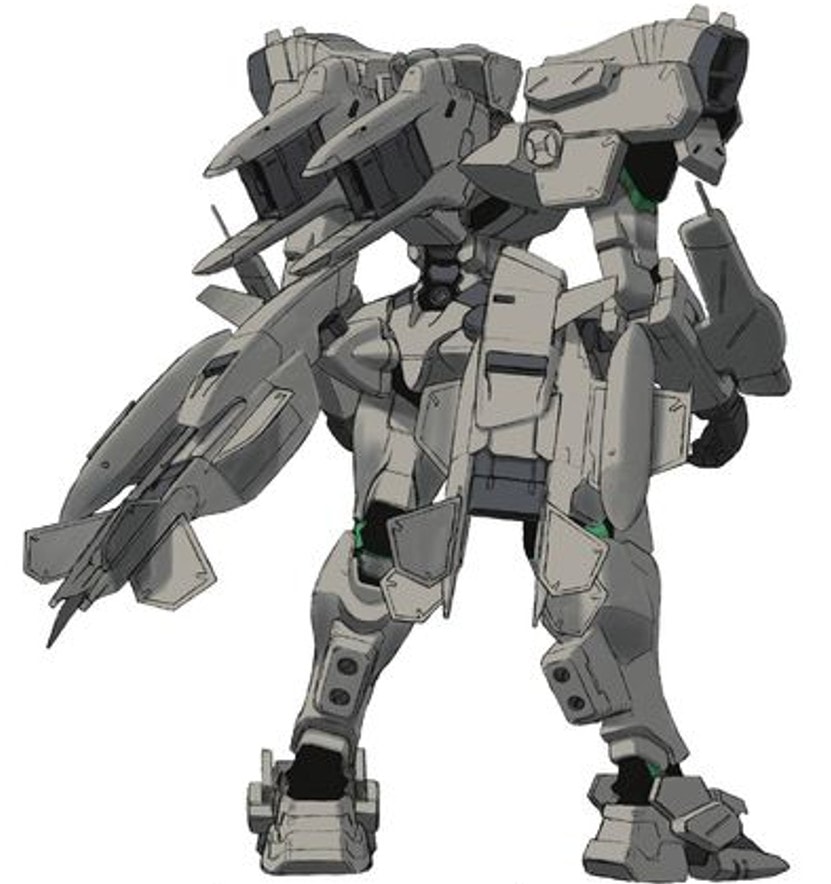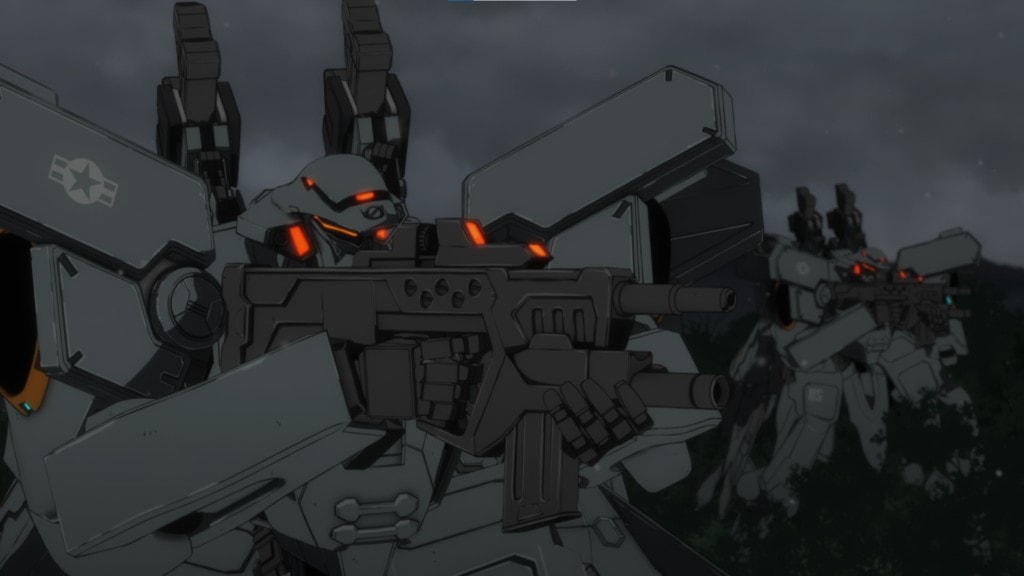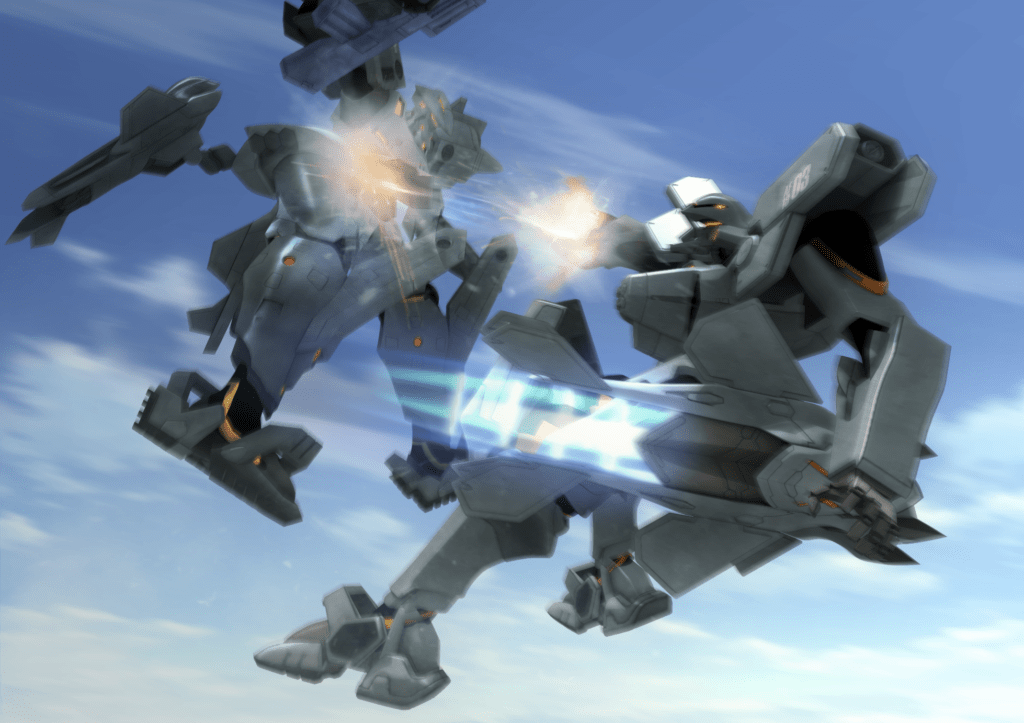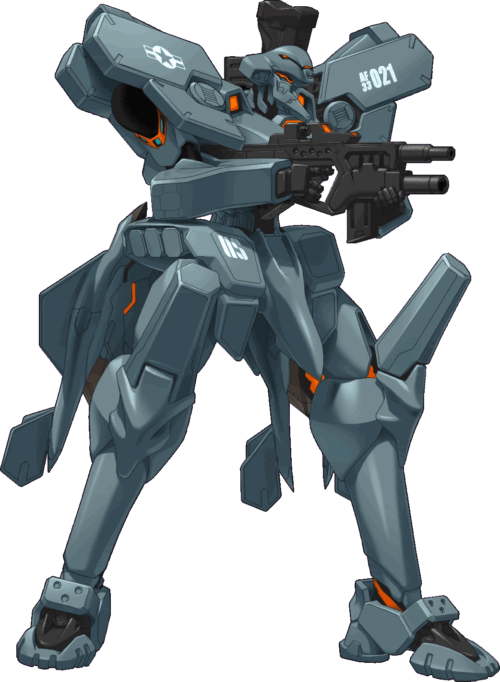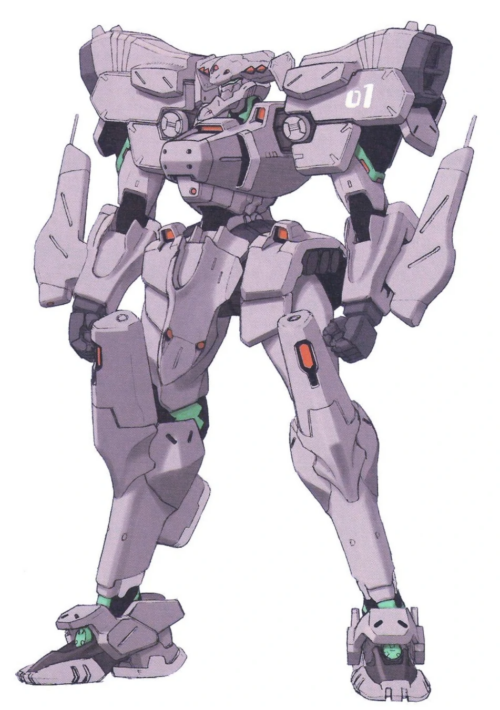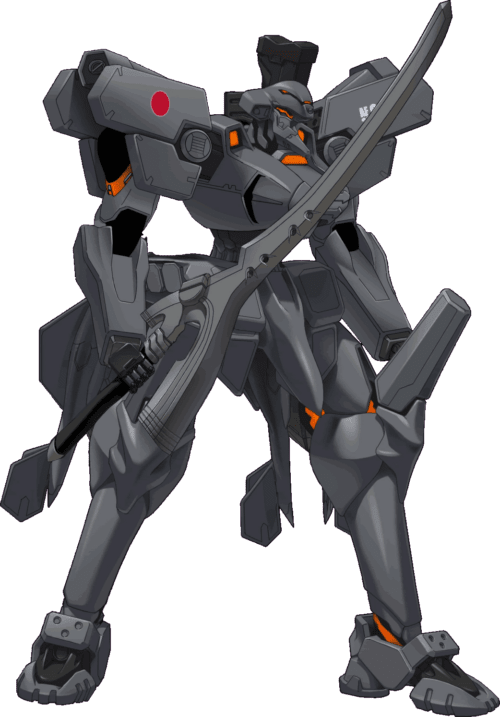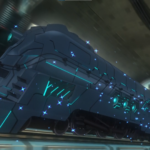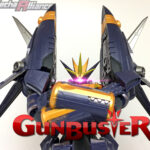
Mecha Profile: F-15 EAGLE – Muv-Luv Alternative
As the war against the BETA worsen years after years, and mankind continuous retreat, it is apparent that humanity need a new Sword against the alien threat. And in comes the most widely used 2nd-generation Tactical Surface Fighter, one hailed as the “masterpiece” of humanity by many – the F-15 Eagle.

I. Development History:
– After humanity’s first Hive Infiltration – Operation Palaiologos – the previous data collected by the Volks Regiment indicated the need of a new generation of TSF. The U.S begun the TSF-X program to develop the next mainline craft. From the combined analysis of the Volks data, it is observed that Laser-class is the biggest threat to TSF, and many other observations led to the conclusion that maneuverability should be increased.
– Many manufacturers submitted their ideas for the project, and McDaell Doglam’s proposal was approved. And in 1984, the F-15 Eagle was formally adopted by the U.S Army. The craft possesses high mobility, increased engine output, weight reduction and more advanced avionics and electronics. From 2nd-gen onwards, TSF are built with a structural imbalance, with the top part much more heavy than the lower half to keep the gravity center high, so the unit can perform evasive maneuver in emergency situation. With the Eagle, TSFs could finally be considered pure anti-BETA weapons, in the truest sense.
– The initial production model, the F-15A, lacked the specifications to reach its full potential. However, the F-15C later accounted for that problem with a newer type of fuel battery. The Eagle finally matured to its full potential. But the Eagle didn’t rest its wing there. The U.S started the Dual Role TSF Development Program (DRTSF) to modernize existing units, and the F-15E – the Strike Eagle – was born in 1995. Due to its excellent performance, the F-15 Eagle is the 2nd-most produced TSF in the history of mankind, only after the F-4 Phantom. THe title “The Strongest 2nd Generation TSF” isn’t just for show.
– After humanity’s first Hive Infiltration – Operation Palaiologos – the previous data collected by the Volks Regiment indicated the need of a new generation of TSF. The U.S begun the TSF-X program to develop the next mainline craft. From the combined analysis of the Volks data, it is observed that Laser-class is the biggest threat to TSF, and many other observations led to the conclusion that maneuverability should be increased.
– Many manufacturers submitted their ideas for the project, and McDaell Doglam’s proposal was approved. And in 1984, the F-15 Eagle was formally adopted by the U.S Army. The craft possesses high mobility, increased engine output, weight reduction and more advanced avionics and electronics. From 2nd-gen onwards, TSF are built with a structural imbalance, with the top part much more heavy than the lower half to keep the gravity center high, so the unit can perform evasive maneuver in emergency situation. With the Eagle, TSFs could finally be considered pure anti-BETA weapons, in the truest sense.
– The initial production model, the F-15A, lacked the specifications to reach its full potential. However, the F-15C later accounted for that problem with a newer type of fuel battery. The Eagle finally matured to its full potential. But the Eagle didn’t rest its wing there. The U.S started the Dual Role TSF Development Program (DRTSF) to modernize existing units, and the F-15E – the Strike Eagle – was born in 1995. Due to its excellent performance, the F-15 Eagle is the 2nd-most produced TSF in the history of mankind, only after the F-4 Phantom. THe title “The Strongest 2nd Generation TSF” isn’t just for show.
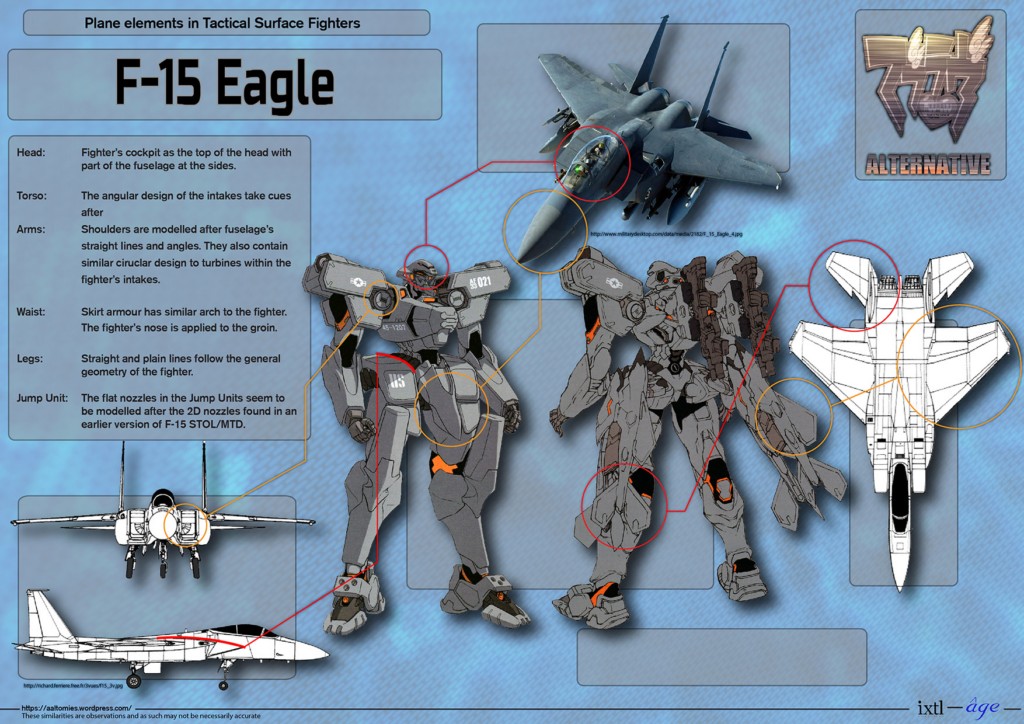
II. Technical Specs & Armaments:
– The F-15 Eagle stands at 18-meter. It utilizes the FE100-PW-200 Jump Unit for the F-15C and the FE100-PW-220 for the F15E. The first Eagles suffered from lack of propellant to fully exert its mobility, but later production model, starting with the F-15C, used breakthroughs and innovations in engine technology and fuel battery to reach its full potential.
– The Eagle uses the AMWS-21 (Advanced Multiple Weapon System-21) as its Assault Cannon with a 36mm autocannon and a 120mm smoothbore cannon. The smoothbore attachment can be switched for other modules depend on the mission. For melee, the Eagle’s talons are the CIWS-1As (Close-In Weapon System-1 A-Type), which are stored on the knee compartments. The spare magazines for the cannons can also be stored on the knees.
– Starting with the Eagle, TSFs are designed to be inherently instable (almost ready to fall over forward) and is kept upright using on-board computer’s calculation. Thanks to the Operation-by-Wire system, additional wirings help stabilize the TSF during operation. This is still an imperfect system and later replaced by Operation-by-Light.
– Even when 3rd-Gen TSF were in production, the F-15 continued to evolve, leading to the F-15E Strike Eagle, which is most likely the most-used 2nd-Gen TSF in the world. The Strike Eagle even served as the Orbital Divers mainstay unit – the cream of the crop of all TSF division. As a 2.5th-generation craft with increased armament capabilities, improved avionics and composite armor, as well as the exchange of internal components for modernized versions, it inherited the title of “Strongest 2nd-gen TSF” from its predecessor and kept it up until this day.
III. Variation:
Much like the real world, the Eagle has many variations down the line, ranging from the first and lowest-spec 2nd-gen to the strongest one.
– F-15A: the initial production model, with issue regarding propellant and performance.
– F-15B: two-seater variant of the F-15A, with a slightly larger frame and cockpit.
– F-15C: the most common variant, with improved upgrades to fix the F-15A’s weaknesses.
– F-15D: two-seater variant of the F-15C.
– F-15E Strike Eagle: a heavily refurbished Eagle to bring the craft to 2.5th-gen performance. Despite the similar appearance, its performance is vastly improved
– F-15J/Type-89 Kagerou: Japanese’s version of the F-15C, with some components manufactured in Japan.
– F-15J Kai: A variant that only appear in Ayu-Mayu Alternative – a non-canon series.
– F-15ACTV Active Eagle: a proof-of concept craft by Boening. The biggest changes are the forearm-mounted sensor and extra thrusters on the back, giving it acceleration of up to 8G.
– F-15SE Silent Eagle: a quasi-3rd generation craft with development technique from the Phoenix Initiative. The Silent Eagle has Operation-by-Light, shouder thrusters, streamlined Jump Units and other avionics upgrades to boost its spec to 3rd-generation level.
– Test Type-02/F-15SEJ Gekkou: Japanese version of the Silent Eagle, adept at all forms of combat, including close-range combat as well as limited stealth.
– F-15B: two-seater variant of the F-15A, with a slightly larger frame and cockpit.
– F-15C: the most common variant, with improved upgrades to fix the F-15A’s weaknesses.
– F-15D: two-seater variant of the F-15C.
– F-15E Strike Eagle: a heavily refurbished Eagle to bring the craft to 2.5th-gen performance. Despite the similar appearance, its performance is vastly improved
– F-15J/Type-89 Kagerou: Japanese’s version of the F-15C, with some components manufactured in Japan.
– F-15J Kai: A variant that only appear in Ayu-Mayu Alternative – a non-canon series.
– F-15ACTV Active Eagle: a proof-of concept craft by Boening. The biggest changes are the forearm-mounted sensor and extra thrusters on the back, giving it acceleration of up to 8G.
– F-15SE Silent Eagle: a quasi-3rd generation craft with development technique from the Phoenix Initiative. The Silent Eagle has Operation-by-Light, shouder thrusters, streamlined Jump Units and other avionics upgrades to boost its spec to 3rd-generation level.
– Test Type-02/F-15SEJ Gekkou: Japanese version of the Silent Eagle, adept at all forms of combat, including close-range combat as well as limited stealth.
IV. Trivia:
– The F-15J was named after the Kagerou-class destroyer warship
– The F-15ACTV is meant to reference the real-life F-15 ACTIVE.
– While the F-15SE Silent Eagle exist in real life, there is no irl counterpart for the F-15SEJ.
– The real-life F-15J Kai has only appeared in parody non-canon work, and never in main series.
V. Gallery:
– The F-15J was named after the Kagerou-class destroyer warship
– The F-15ACTV is meant to reference the real-life F-15 ACTIVE.
– While the F-15SE Silent Eagle exist in real life, there is no irl counterpart for the F-15SEJ.
– The real-life F-15J Kai has only appeared in parody non-canon work, and never in main series.
V. Gallery:


